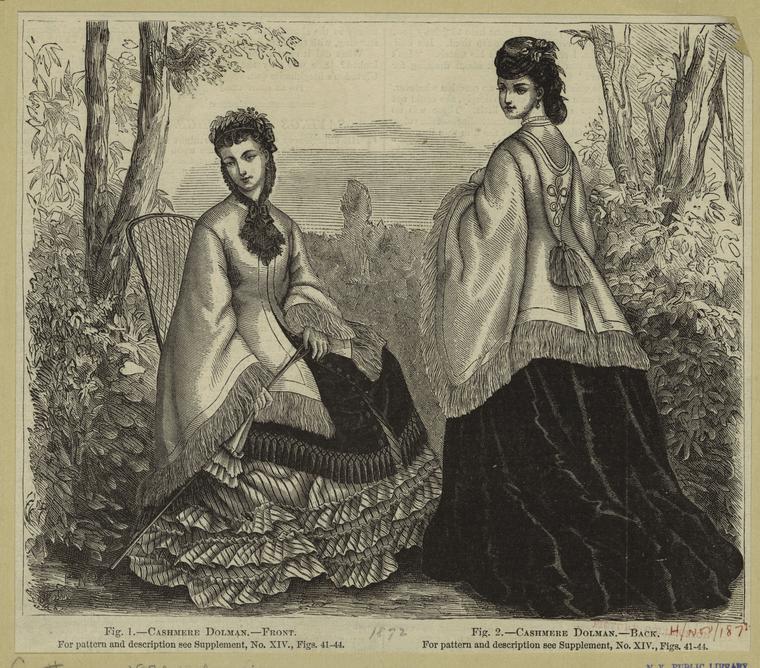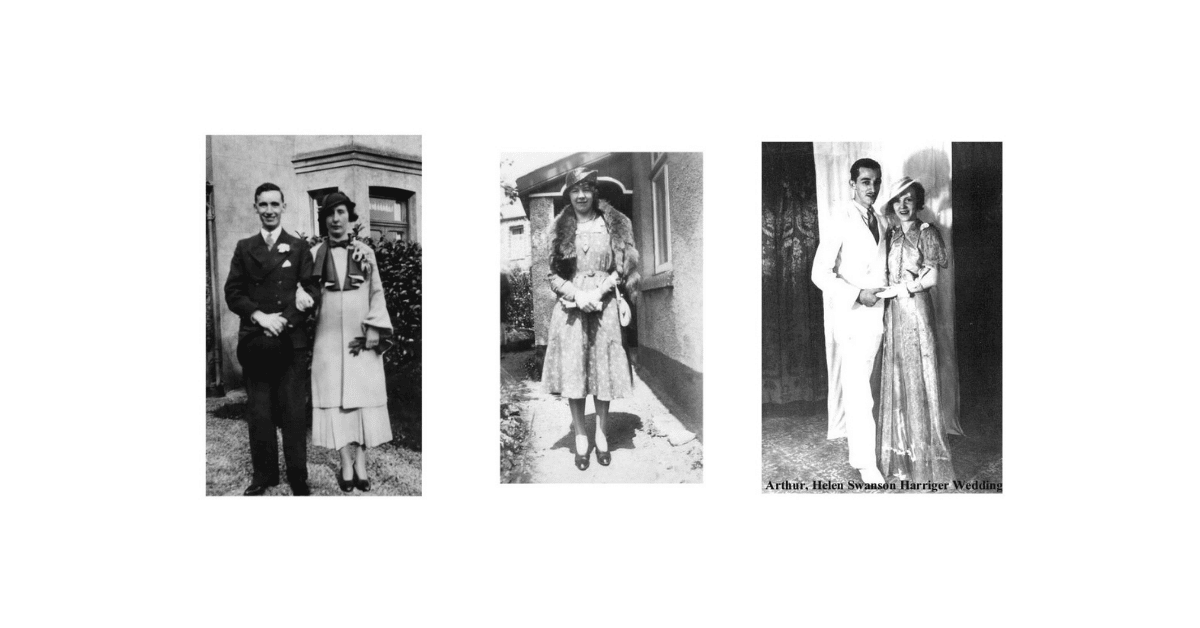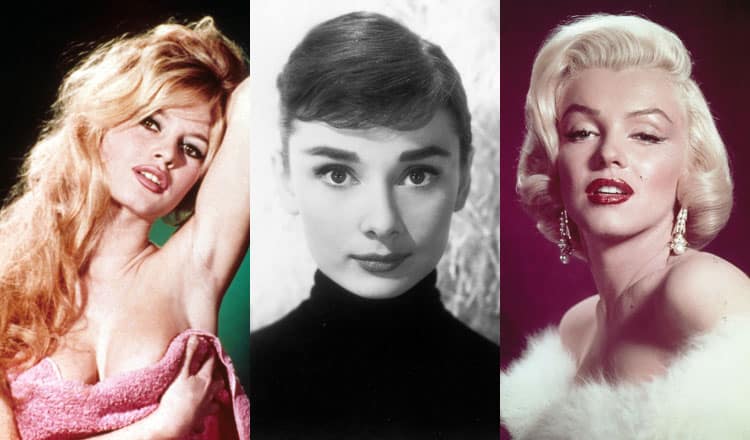By Pauline Weston Thomas for Fashion-Era.com
- The Mid Victorian Silhouette 1860-1880
- Factors Affecting the Fashion Silhouette after 1860
- The New Princess Line 1866
- The Soft Bustle Fashion Silhouette 1867-1875
- The Late Victorian Silhouette 1878-1901
- The Princess Line and the Cuirasse Bodice
- The New Hard Bustle of 1883
- Victorian Fashion History - Power Dressing
- Bright Aniline Dyed Colours
- 1890s
- Leg of Mutton Sleeves
By Pauline Weston Thomas for Fashion-Era.com
This is an overview of fashion history of the early Victorian era and can be read in line with other related topics. Much fuller details of petticoats styles are given in Crinolines and Bustles.
Victorian Fashion - Where to Look for Fashion Details
Movements like the Rational Dress Reform Society and the Aesthetic Dress Movement highlight positive and negative reactions to industrial and technical applications happening in Victorian society. In terms of Victorian fashion history, this also brought changes in women's position and dress.
You'll also find other relevant information in sections like Jewellery, Makeup, Shopping in the Past, Chambre Syndicale, What's in a Name as well as the social effects on Victorians, Victorian Recreations, A Woman's Place in the 19th Century, Victorian Homelife Changes, The Seaside and Fashion Dolls.
Dating Victorian Costume
Queen Victoria reigned from 1837 to 1901 and was succeeded by her 60-year-old son Edward the Prince of Wales. At the start of the Victorian era, most fashions lasted about a decade, but mass communications and mass production both improved so much that by 1901 the history of fashion was moving in a yearly cycle.
Illustrations of Victorian clothes of the last 20 years of the C19th can be dated to within a year or two. Looking at the section on Crinolines, Bustles and S Bends Corsets would help those new to costume to understand the subtle changes in dress and hairstyles and how to spot the changes from a fashion history point of view.
For theatrical and re-enactment work there are clear distinctions in dress in every Victorian decade.
The Early Victorian Fashion Silhouette 1837-56
The look of demure prim gentility was emphasized by the loss of the great hats in 1835 for bonnets. Great hats had given a flirtatious air to clothes and their replacement by bonnets changed the whole character of day dresses. Lavishly trimmed bonnets stayed in fashion for half a century and weren't worn much after 1890.
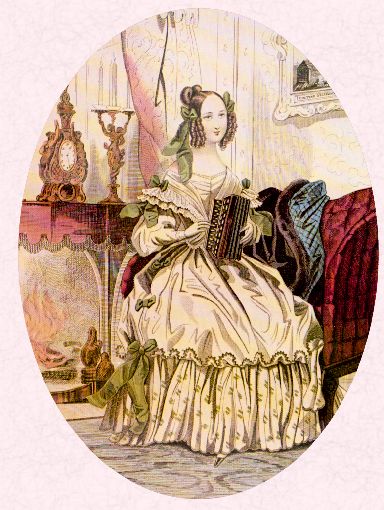
In 1836 Gigot sleeves collapsed abruptly and so costume began to develop the sentimental 'early Victorian look' we associate with Queen Victoria's early rule. Prim sentimentality was emphasized by the popular ringlet hairstyle.
By 1840 the collapsed sleeve was much narrower, but still retained a restrictive seam line on the dropped shoulder.
The early Victorian tight-fitting pointed bodice was much longer and had a very small tight fitting waist. All the boned bodice seam lines and trims were directional to emphasize the small waists. The boning also helped stop the bodice from horizontal creasing.
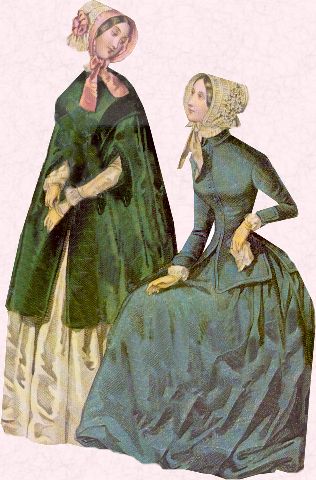
By 1845 the boned bodice was even more elongated into a V shape and the shoulder sleeve seam line drooped even more. This meant that an early Victorian woman's arm movements were restricted.
The limited range of arm movements increased the appearance of demure vulnerability and helplessness we so often associate with Victorian femme fatales. Softer more demure plain colours and small delicate dimity patterns helped to add a neat ladylike quality to gowns.
A Victorian woman could also emphasize modesty by wearing freshly laundered detachable white collars and false undersleeves called engageantes. Both were often made of delicate whitework and gave an air of refinement and daintiness.
After being absent for a decade the cashmere shawl was brought back into fashion about 1840. Because the new version was larger it acted as an outer wrap and when folded in half and draped over the shoulders would reach almost to ground level in some cases.
Cartridge pleats were used at first to draw up the skirt fabric in 1841, but after 1846 flat pleating the fabric gave more overall hemline width. To make the skirts appear wider, extra flounces were added in the early 1840s to evening dresses and by 1845, flounces and short overskirts were a regular feature of day dresses.
As bell shaped skirts of the 1830s became wider and they began to also look dome-shaped. By 1842 they needed a great deal of support from extra petticoats. The wider skirts were supported by stiffened fabrics like linen which used horsehair in the weave.

'Crin' is French for horsehair so the word crinoline suggesting a crin lining was used for any garment area that was stiffened to give shaped foundation. Strip hem linings and a sleeve head are just two examples where crin was used.
Later by 1850 the word crinoline began to mean the whole of the beehive-shaped skirt. It was then only another step to call the later artificial or cage-hooped support frame petticoats after 1856, crinolines.
The cut of the low shoulder line filled in to the neckline by day followed through to evening dresses. Evening dresses totally exposed a woman's shoulders in a style called the 'bertha'. Sometimes the bertha neckline was trimmed over with a 3 to 6 inches deep lace flounce or the bodice neckline was draped with several horizontal bands of fabric pleats.
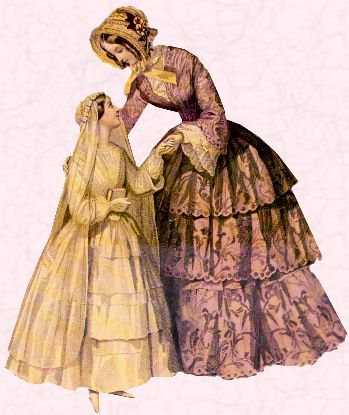
All this exposure was restricted to the upper and middle classes. Victorian working-class women would never have revealed so much flesh. The décolleté style meant that the shawl became an essential feature of dresses.
In the early Victorian years time corsets also lost their shoulder straps and a fashion for producing two bodices, with a closed décolletage for day and a décolleté one for evening.
Using a separate bodice to skirts meant that a tighter waist could be achieved. This fashion for two piece costumes, but known as a dress lasted until about 1908.
Crinoline Cage Frame of 1856 Patented by W. S. Thompson
Six petticoats at least were needed to hold the wide skirts out. The cotton, flannel or wool petticoats used under one skirt could weigh as much as 14 pounds, so clothes were uncomfortably hot and heavy in summer.
The American Mrs. Amelia Bloomer denounced the style that needed so many petticoats, suggesting a bifurcated garment as a solution. You can read more about Mrs. Bloomer and emancipated dress in the section called Rational Dress Reform.
Another American W .S Thompson took out a patent on a cage frame in 1856 and then marketed a steel frame cage crinoline throughout Europe. It freed women from excessive petticoat weight, although a top petticoat give a softer foundation for the dress skirt.
It let women's legs move freely beneath, but it could be unstable in gusts of wind, so it was fortunate that women had universally adopted the wearing of drawers some years before.
Petticoats were always cut following the line of the top garment. Skirts among all classes began to look rounded, like gigantic domed beehives and soon they reached maximum size. Freed from excess petticoat weight women began to gain a jaunty spring in their step.
Within a few years the crinoline was improved when it became articulated and various modifications such as subtle flattening of the front created a less domed more pyramid effect by 1860.
Engageantes
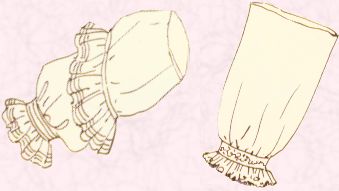
To balance the effect of the cage crinoline, sleeves were like large bells too and sometimes had open splits allowing for lavish decorative sleeve hemlines and detachable false undersleeves called engageantes.
Engageantes were often made from fine lace, linen, lawn, cambric or Broderie Anglaise and were easy to remove, launder and re-stitch into position.
It is these distinctively styled sleeves that help date the first softer polonaise bustle when looking at illustrations. Charles Worth was responsible for many interesting sleeve styles of the mid-Victorian era.
William Perkin Discovers Coal Tar Aniline Dyes 1856
In 1856 William Perkin did some experiments and discovered Mauveine an extract from coal tar. Mauveine was a bright purple dye synthesized under laboratory conditions and it revolutionized the textile industry. Perkin made a fortune from his discovery of aniline dyes.
Other dye colours such as magenta and brilliant blue were soon on the market and in 1856 the Frenchman Verguin discovered fuchsine. When the dyes were used on silk the colours sang with vibrancy, but could also be garish when seen next to naturally dyed fabrics.
Brighter fashion colours were soon in use, but there were some like the Aesthetics who reacted against the brasher tones.
Charles Worth Redefines Haute Couture in 1858
In 1857 the Englishman Charles Worth set up a Paris fashion house at 7 Rue de la Paix a then unfashionable Paris district. In 1858 he made a collection of clothes that were unsolicited designs.
He showed the clothes on live models and when people bought his original designs he became a leading fashion design couturier of the Victorian era. Until that time fashion details and changes were suggested by the customers. The House of Worth became a leader of ideas for the next 30 years.
Haute Couture during the Victorian period was an ideal foil for conspicuous consumption. Fragile gauze dresses decorated with flowers and ribbons that were made for wealthy young women were only intended to be worn for one or two evenings and then cast aside as they soiled and crushed so easily.
Silk flowers, froths of tulle and pleated gauze trims would have emphasised the innocence of virginal girls whilst signalling their availability on the marriage market. Such conspicuous waste and conspicuous consumption were hallmarks of Victorian high living.
Older, married more senior women wore statelier fabrics like heavy satins, crisp silks and plush velvet. It was thought good etiquette to dress according to one's position in society and that also meant not wearing clothes more suited to a younger woman.
When researching fashion history it is important to remember that ordinary women were dressed in a much more subdued manner. Many would mainly wear occupational dress or household serving uniform.
The Mid-Victorian Era Fashion Silhouette 1860-1880
1860s Fashion- Factors Affecting the Fashion Silhouette After 1860
We arrive at 1860 with four significant facts that were to seriously affect the fashion of the future. Firstly the sewing machine had been invented, secondly, clothes would in future become couture design-led, thirdly synthetic dyes would make available intense colours.
Fourthly in 1860 the crinoline domed skirt silhouette had a flattened front and began to show a dramatic leaning toward the garment's back.
Charles Worth thought the crinoline skirt unattractive.
However, he is associated with it, as he did manipulate the style, as a result the shape soon changed to a newly trained, softer bustled version, which only the really rich found practical.
In 1864 Worth designed an overskirt that could be lifted and buttoned up by tabs.
This top skirt gave a lot of scopes for added ornamentation and by 1868 it was being drawn and looped right up at the back creating drapery and fullness.
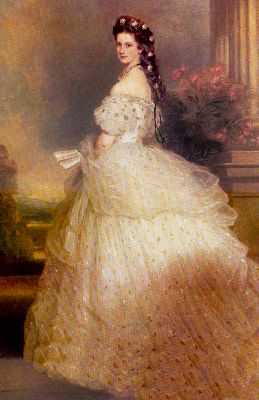
The New Princess Line 1866
In 1866 the new Princess gown also changed the line of fashionable dresses. The Princess gown was cut in one piece and consisted of a number of joined panels fitted and gored from shoulder to hem that gave the figure shape through seaming.
The Gabriel Princess gown with a small neat white collar was mainly made in grey silk and followed the fuller skirt lines of the era. This is the dress style often used to depict the constrained buttoned-up repressed governess character of Jane Eyre in films. Later Princess styles were slimmer and much more form fitting. Sleeves in day dresses were often of a banana shape.
The Englishwoman's Domestic Magazine Fashion Plates 1869
Samuel Beeton founded two of the most important British fashion magazines of the C19th. These Victorian magazines were Mrs Beeton's The Englishwoman's Domestic Magazine and The Queen. Lindsay, owner of an 1869 edition of 'The Englishwoman’s Domestic Magazine', kindly sent me these wonderful fashion plates.
Last year Lindsay the owner of these fashion plates also sent me a fascinating photograph of Charlotte a young Victorian woman whom he knew to be a relative but was unsure of which 'great' grandmother she was.

Using historical images such as fashion plates like these, together we came to the conclusion that the date of Charlotte's photograph sitting was 1869-1871.
You may have read recently in the UK newspapers about a rare 1863 copy of a Victorian magazine to be auctioned at the end of November 2007, by Auctioneers in Derbyshire. It seems the auctioneers expect that the edition will fetch £200-£300 at auction. I've no doubt it will after all the publicity the auction house has generated!
I have to say that I don't consider such items as rare as the auction house seems to think. Search eBay on a regular basis and this type of bound book whether Petersons, Grahams, Petit Courrier des Dames or World of Fashion all at some point, appear in the fashion and costume plate listings.
Within just a day of seeing the Victorian snippet article in the Times and the Telegraph, I received an email from a site visitor saying an octogenarian relative of his had ... "just seen an article ... about The Englishwoman's Domestic Magazine. Now she has unearthed a green-covered book dated 1867, with the same title..."
Rare? Not so rare I think. Desirable, if you are passionate about fashion plates. Many families just keep such items in their household as treasures from another generation to the next, and now and again they get out the book to look at the lovely plates. Americans and Australians seem to have larger lofts than we British, consequently, they appear to find hordes of such memorabilia in grandma's pile of inherited goods; boxes that were never really sorted after clearing great-grandma's home.
Lindsay, owner of a 1869 edition of The Englishwoman’s Domestic Magazine, inherited his fashion plates in much the same manner. He would never sell them, but he kindly sent me scans of these wonderful fashion plates back in 2004 and they have been on the site since 2005. These thumbnails enlarge to full A4 size. You can also see many more fashion plates on fashion-era.com simply by using the search button.
The Englishwoman's Domestic Magazine Fashions 1869
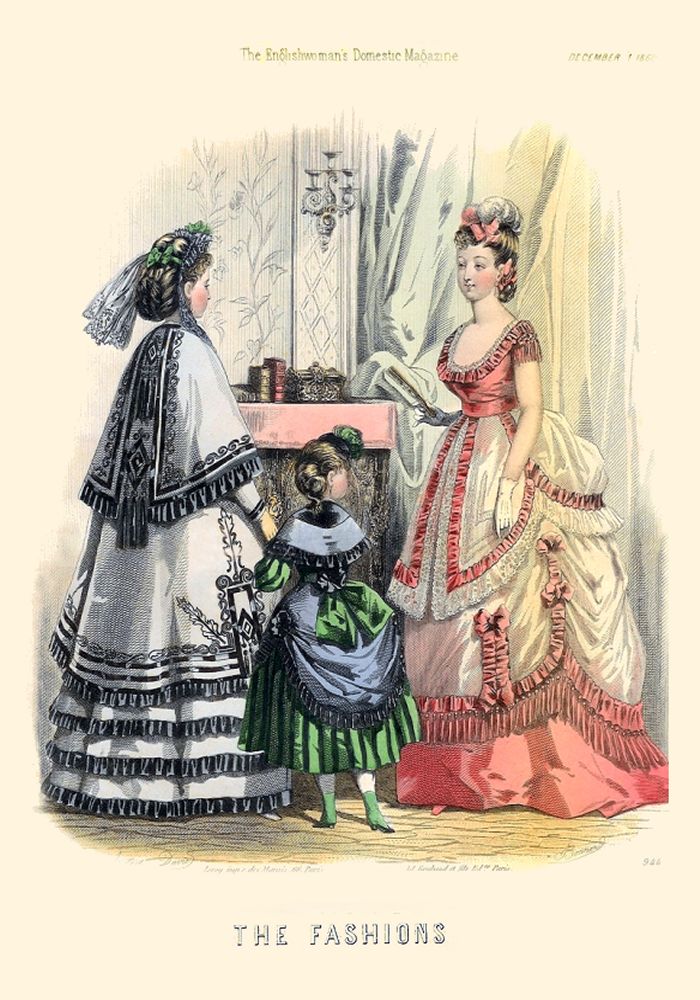
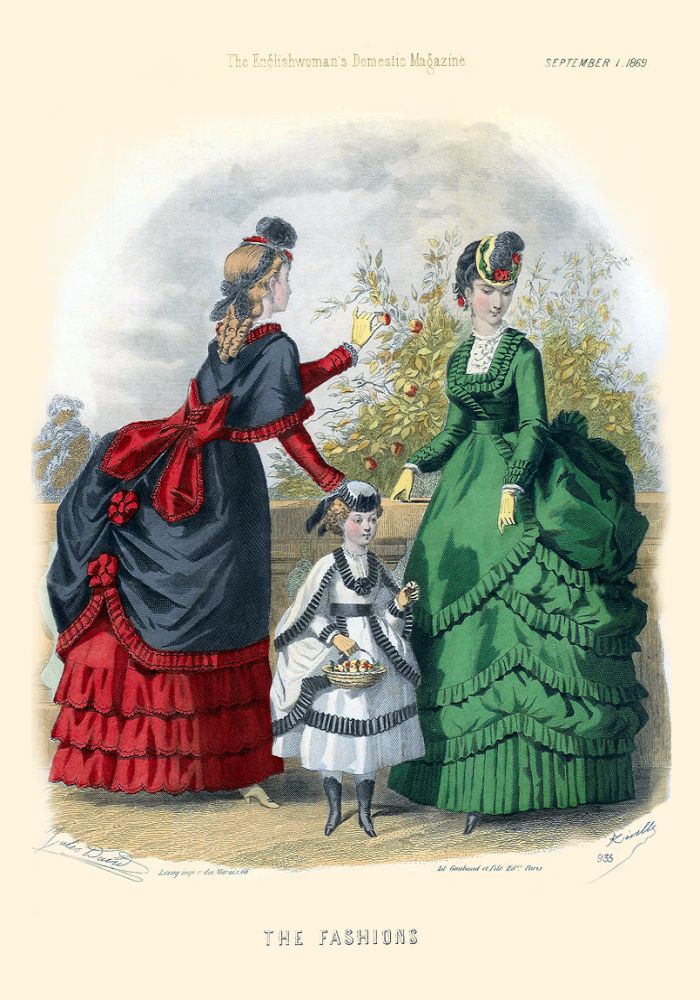
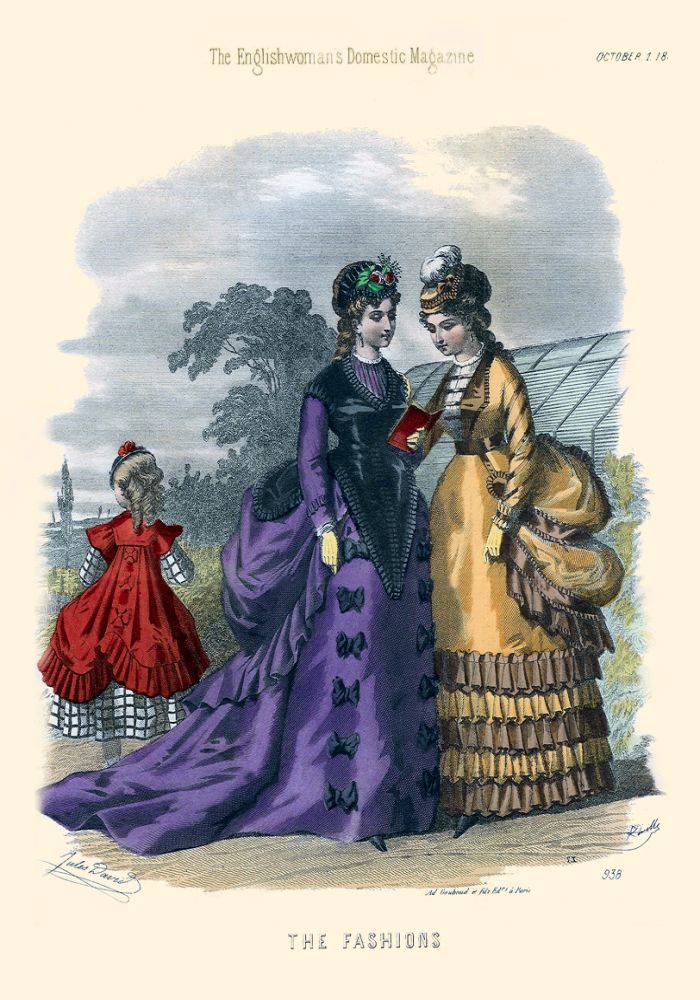
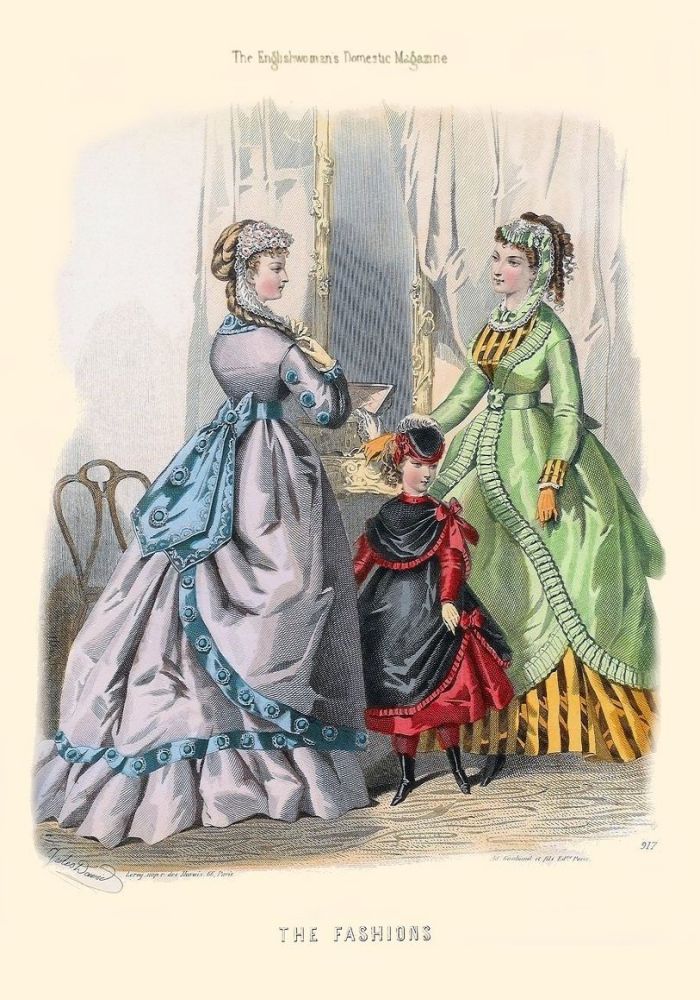
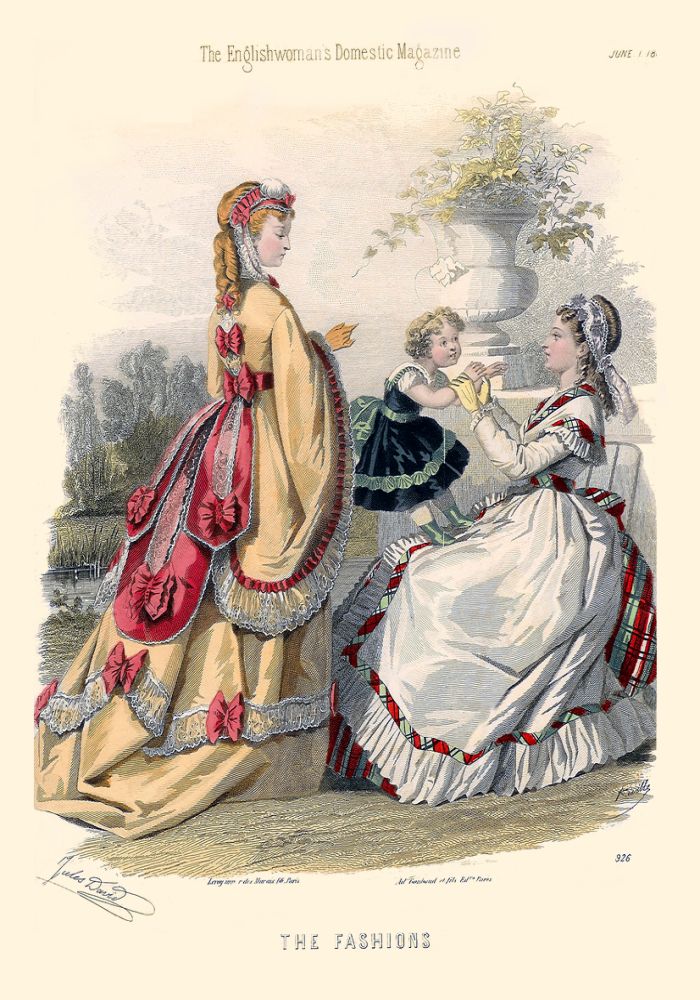
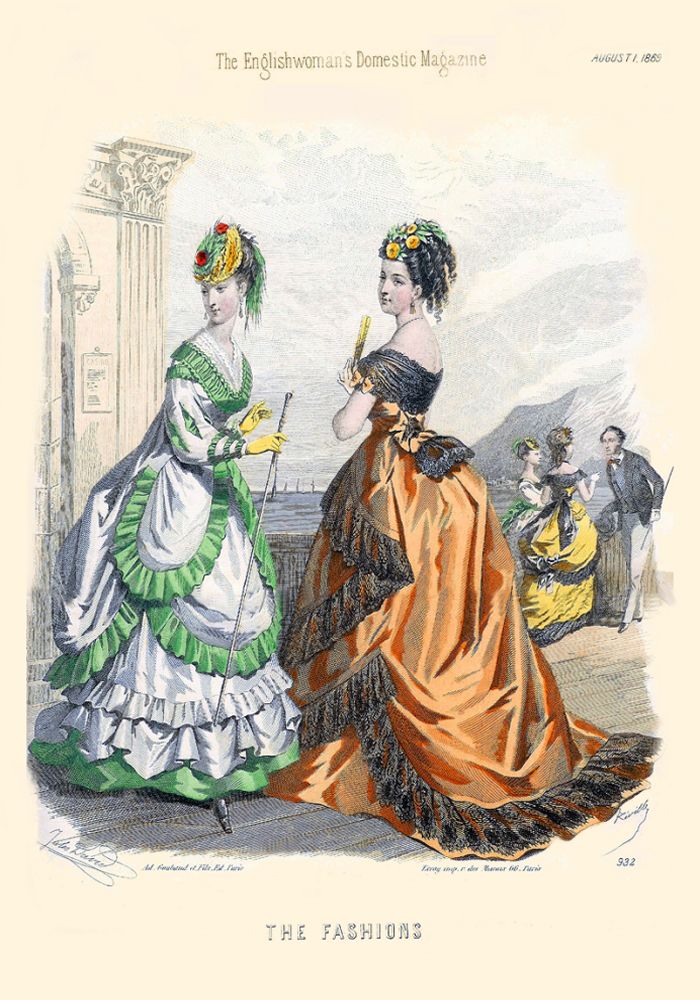
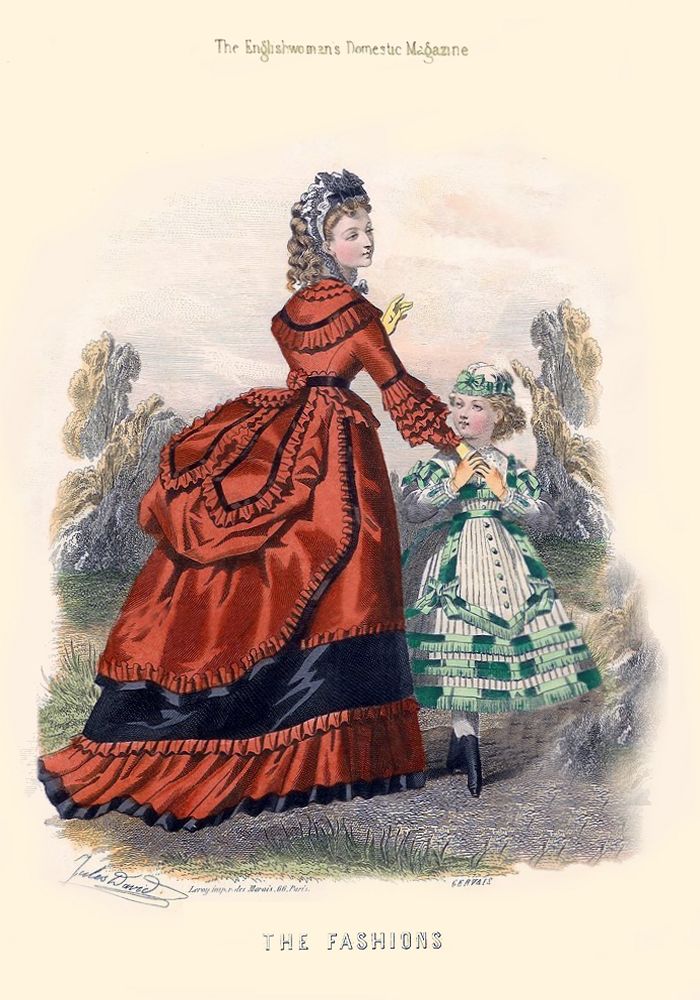
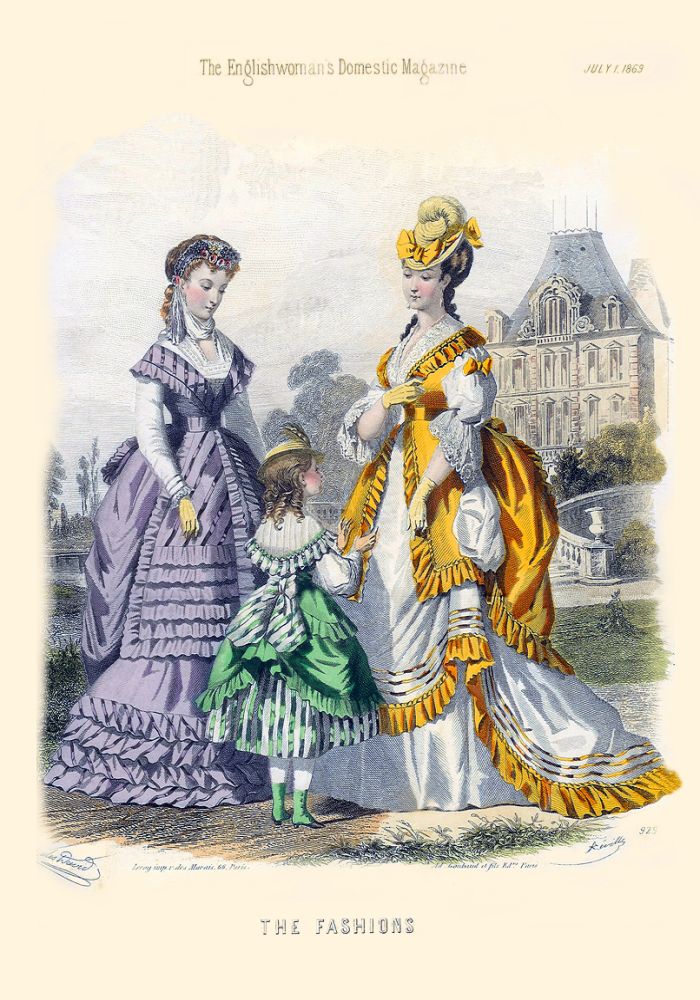
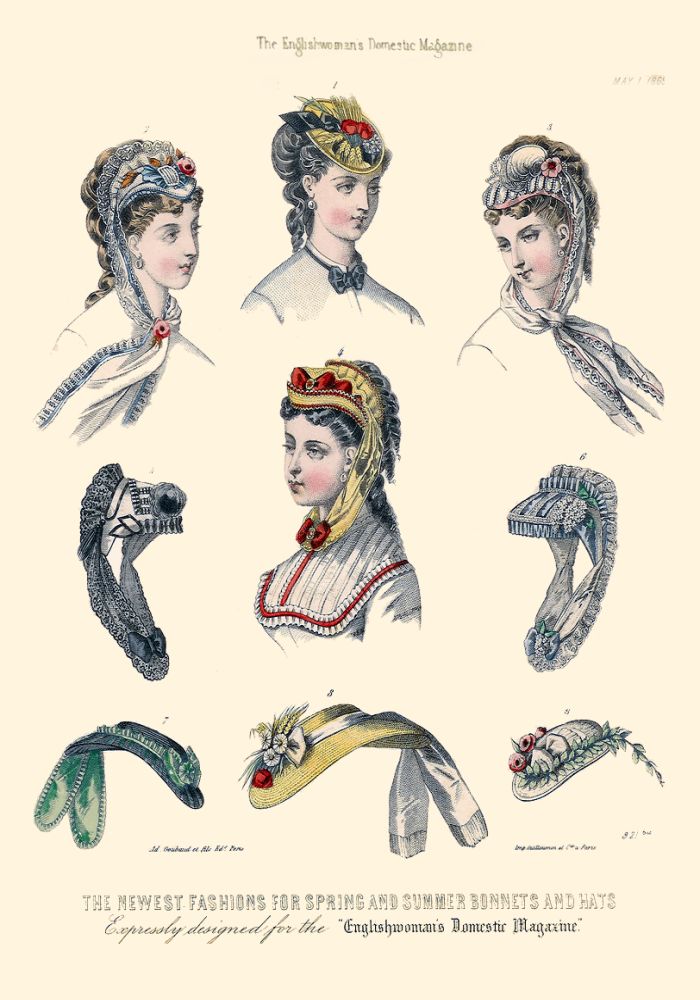
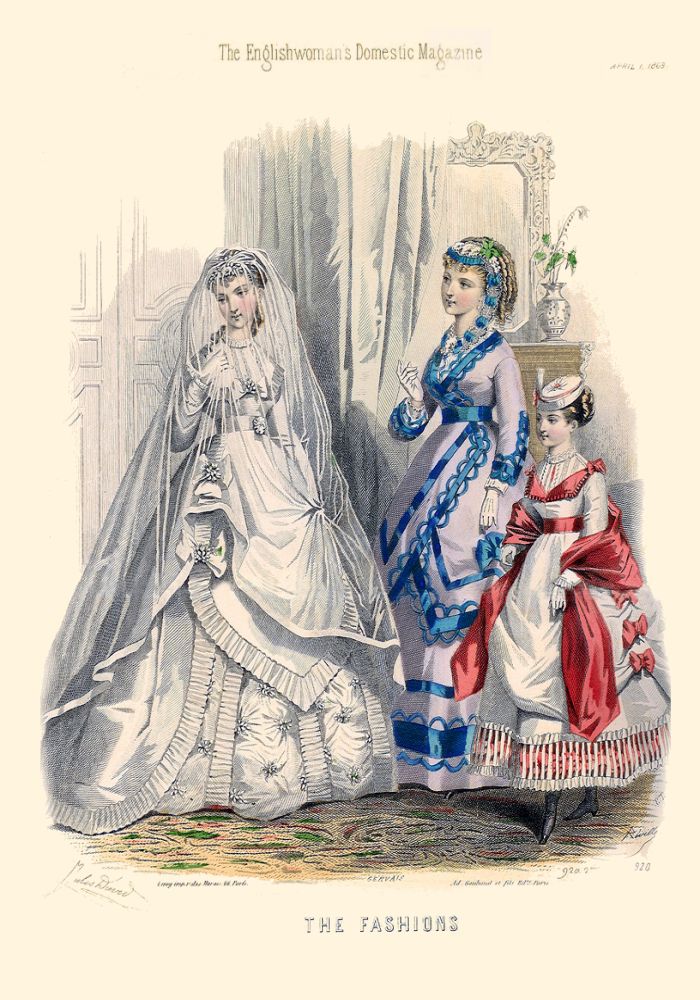
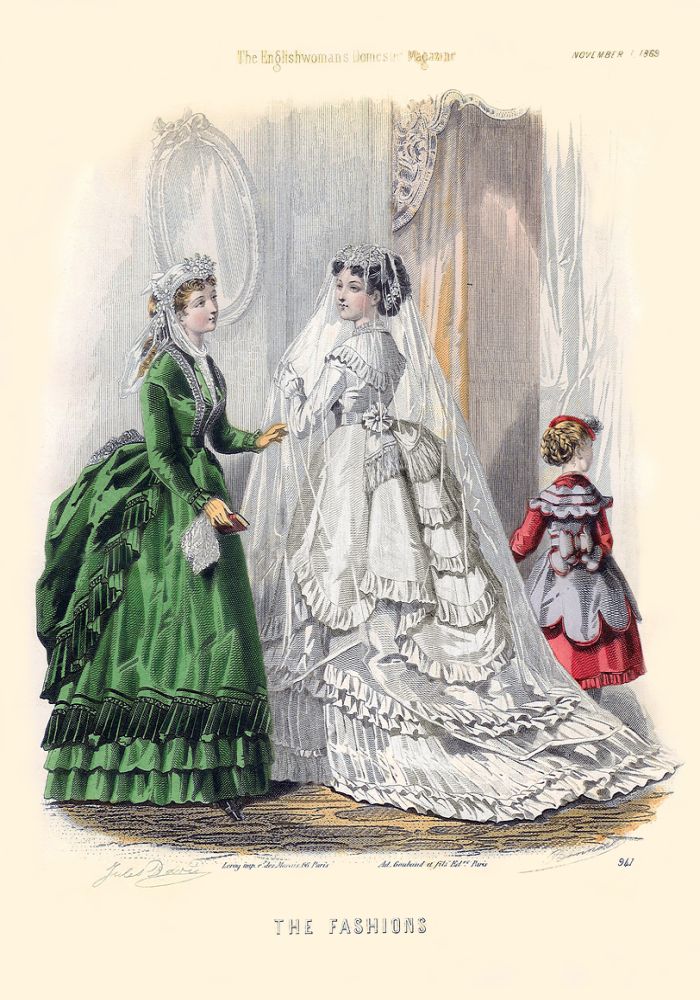
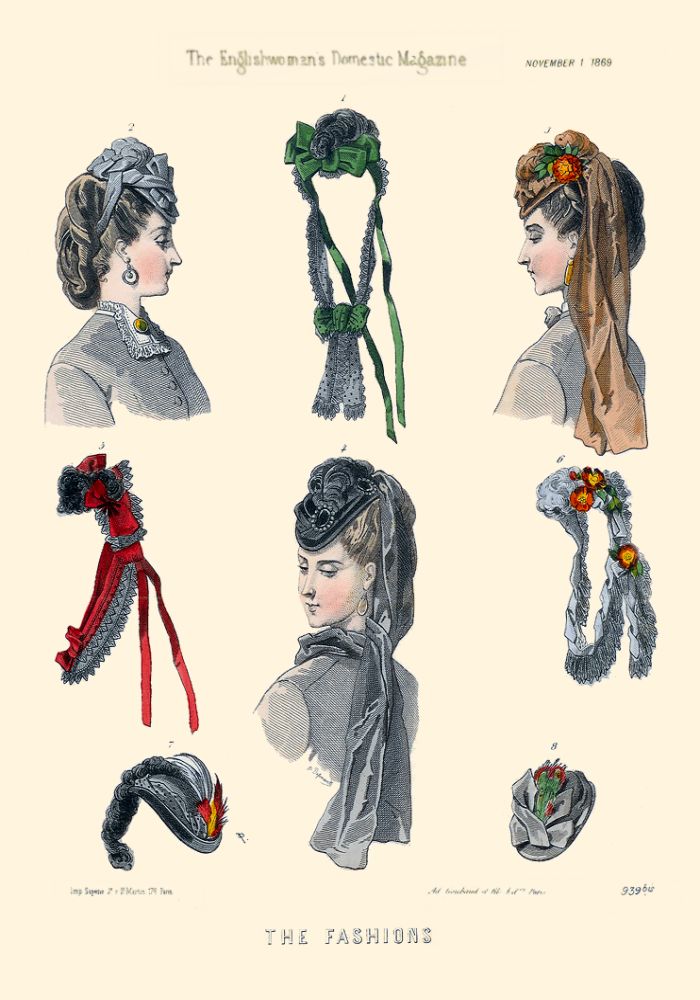
These images are available here as grey scale images for colouring in.
The Englishwoman's Domestic Magazine began in 1852, but it contained only nondescript black-and-white images until 1860. Aware of the growing interest in fashion, style and manners from the new middle classes, in 1860 Beeton began to import tinted fashion plates directly from Jules David in Paris.
Every month for the next 25 years a fashion plate graced The Englishwoman's Domestic Magazine. With falling sales it merged into The Milliner, Dressmaker and Warehouseman's Gazette in 1877 although still publishing fashion plates by David and ceased business in 1881.
Using Fashion Plates to Help Date Photographs
Last year Lindsay the owner of these fashion plates sent me a fascinating photograph of Charlotte a young Victorian woman whom he knew to be a relative but was unsure of which 'great' grandmother she was. Together we came to the conclusion that the date of Charlotte's photograph setting was 1869-1871.
Imagine then my surprise when some months later he scanned these lovely fashion plates and sent them to me. It suddenly dawned on me that they had probably been pored over by Charlotte who was indeed following the latest fashions of the day. Her hairstyle bears a strong resemblance to the main lines shown in the plates here as does the cut of her bodice and the set of the long cuffed sleeve lines.
Fashion plates like these are especially helpful in dating photographs. Here I have removed the sleeves from 6 of the plates above to show the general silhouette line of the sleeve style. Obviously, there was some variation as expressed in the flamboyance of the theatrical angel sleeve in the header. However, in the main the sleeves of 1869 - 1871 were slim line and cuffed or pie crust frilled as in these examples.
You are reading an original fashion history article by Pauline Weston Thomas at fashion-era.com.
Sleeves of 1869
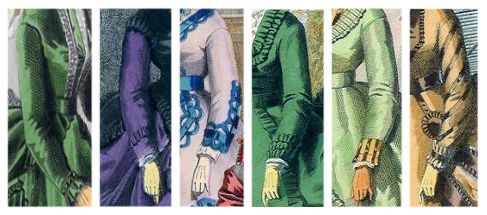
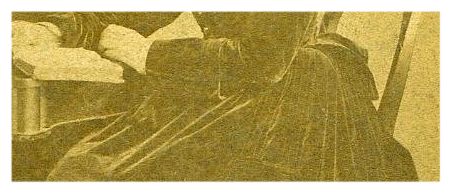
This is a section of the sleeve in Charlotte's photograph.
I also own some of the fashion plates from this magazine and can confirm the text makes fascinating reading drawing the reader into a world of how to conduct oneself and organise life to perfection in the late C19th.
The Soft Bustle Fashion Silhouette 1867-1875
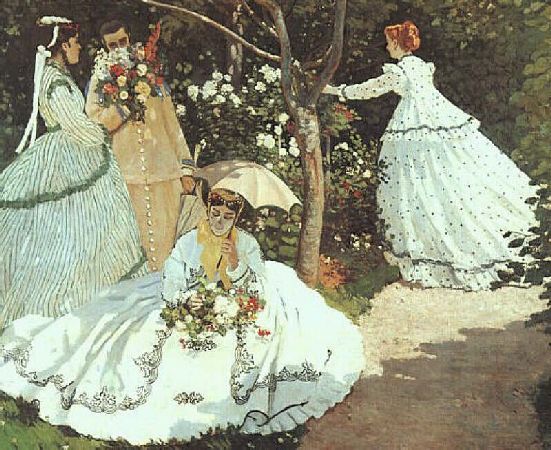
By 1867 with the fullness bunched up to the back of the skirt creating a polonaise style, crinolines and cages suddenly disappeared evolving into tournures or bustles. The bustles supported accentuated drapes on the hips.
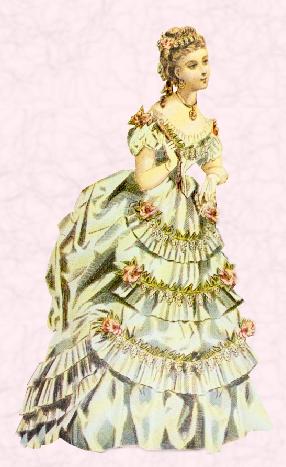
After 1868 Worth's overskirt really caught on in England and contrasting underskirts and gown linings were all revealed as the overtop skirt was divided or turned back.
Other top skirts were called aprons and they were also draped making the wearer look like a piece of elaborate upholstery.
Rounder waistlines were fashionable and waistlines even began to rise very slightly.
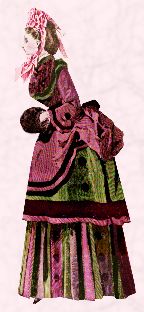
From 1870, ball gowns always had a train. Soon by 1873, the train was seen in day dress.
By 1875 soft polonaise bustle styles were becoming so extreme that the soft fullness began to drop down the back of the garment and form itself into a tiered, draped and frilled train.
Trains were very heavily ornamented with frills, pleats, ruffles, braids and fringing. The sewing machine instead of simplifying sewing, just became a tool to add more ostentation.
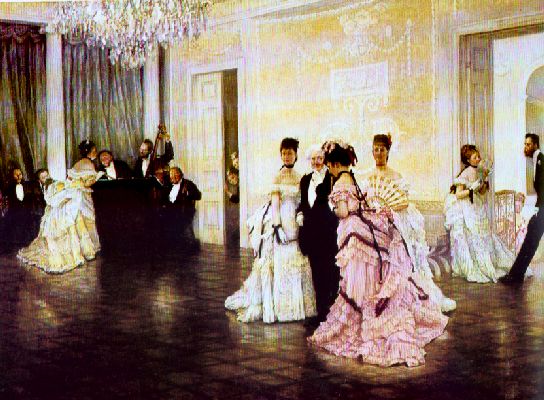
The other main feature of the style change was the introduction of the cuirasse bodice which dipped front and back extending a little over the hips. By 1880 the soft bustle styles of the 1870s had totally disappeared.
The Late Victorian Silhouette 1878-1901
By 1878, women of the late Victorian era have a very different look about them compared to earlier Victorian women.
The Princess Line and the Cuirasse Bodice
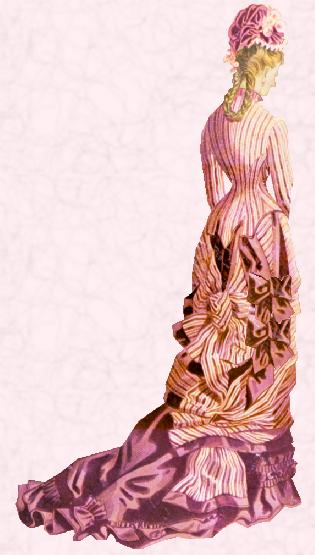
The soft polonaise style bustle styles were replaced by Princess sheath garments without a waist seam with bodice and skirt cut in one.
The Princess line sheath had a bodice line similar to the very tight fitting cuirasse bodices which had been getting longer and longer.
By 1878 the cuirasse bodices had reached the thighs. The cuirasse bodice was corset like and dipped even deeper both front and back extending well down the hips creating the look of a body encased in armour.
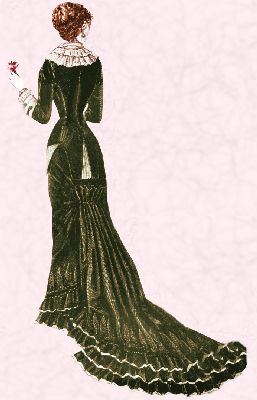
By 1880 the two ideas merged and the whole of the dress was in Princess line style with shoulder to hem panels. The silhouette was slim and elongated even more by the train. No bustle was needed for the cuirasse bodice or Princess sheath dress, but a small pad would have helped any trained fabric to fall well.
The slimline style needed good dressmaking skills to get a flattering fit. When done well it was attractive, but all too often swathes of fabric were wrapped and arranged across the garment in an effort to disguise poor dressmaking skills.
It was not a very practical garment and only really suited to the very slim and those who did not have to work. As a fashion it barely lasted 3 years.
The New Hard Bustle of 1883
Suddenly out of nowhere in 1883 a new jutting out shelf like style of bustle appeared.
It had been shown in Paris in 1880, but as a fashion took off later outside of Paris.
It reappeared even larger than ever as a hard shape that gave women a silhouette like the hind legs of a horse as shown in the page heading.
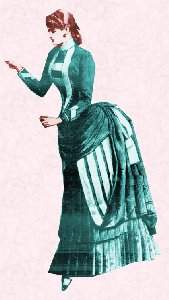
The new bustle dress had a different look. It had minimal drapery compared to the former and a slimmer more fitted severely tailored princess bodice, with a much flatter front. What drapery there was, was tidily arranged at the front of the dress as a small apron. Soon even that disappeared.
For support the spring pivoted metal band Langtry bustle gave the correct foundation for the wider skirts.
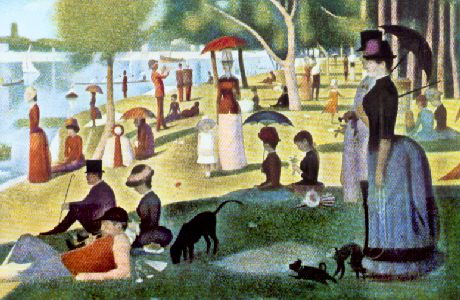
This later bustle fashion was very moulded to the body and the heavy corsetry gave an armour like rigidity to the silhouette. The pointed bodice began to look quite tailored.
Tailored garments had been introduced in 1874 and their influence on design was subtle, but led eventually to the tailor made suit so fashionable in the 1890s.

In 1887 the sleeves were still slimmer, plain and close fitting. The sleeves look like quite a different style than on the bustle dress of the 1870s which had sleeves that would not have looked out of place on dresses of 1860.
By 1889 silhouette changes now couturier led were changing more rapidly and the sleeve developed a very slight leg of mutton outline which soon needed support.
left - Dress of 1889 showing signs of elevation at the sleeve head.
Victorian Fashion History - Power Dressing

It's interesting to note how late Victorian women embraced the sharper tailored jacket fashion which gave them a different posture with a more confident air reflecting the ideals of early female emancipation.
Other military and more tailor made styles of jacket were also popular. Some dresses also had a more severe air about them.
There are similarities in the period 1885 with 1985 when women also showed their strength in the corporate workplace with Power Dressing through more masculine tailored, shoulder padded clothes. A similar broad-shoulder trend occurred in the Utility Clothing era of the 1940s when women did work usually thought of as men's work.
Bright Aniline Dyed Colours
The gowns of the 1880s were almost always made in two colours of material. Vivid colours such as deep red, peacock blue, bright apple green, royal blue, purple, mandarin, sea green were used alone, in combination, or in tartan fabrics. Some colour combinations were very strange.
At night ladies evening dresses were in softer hues and although they were extravagantly trimmed in contrast fabrics and very décolleté, they followed the general line of fashion.
1890s Evening Gown
Gradually the skirt widened and flared as the fullness of the bustle began to fall into pleats down the garment back eventually disappearing to nothing.
As before the bustle foundation softened until only a small pad was left by 1893.
The armour-like hour glass figure soon developed into the S-Bend shape corset which set the Edwardian Corsetry silhouette until 1907-8.
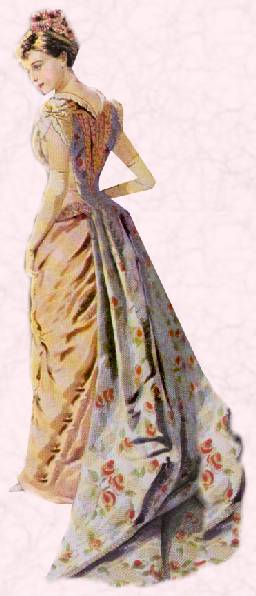
Leg of Mutton Sleeves
The leg of mutton sleeves continued to develop and sprouted high above the shoulders, By 1895 the sleeves swelled into enormous puffs similar to those of 1833. As happened in 1830 to balance the huge shoulders the skirt widened and flared, whilst keeping the waist tight and handspan narrow.
Queen Victoria's influence over fashion was long gone. people who were in mourning still followed court guidelines on mourning dress.
The real royal influence in fashion was the wife of the Prince of Wales, Princess Alexandra. Together they set the tone for society and fashion in the last decade of the century in the 1890s and into their own reign of the Edwardian era from 1901 to 1910.
Victorian Sleeves
A variety of sleeve styles was popular from about 1860 to 1885 in the mid-Victorian period.
Elaborate decoration was common and many sleeve style trends were set by Charles Worth. The invention of the sewing machine led to even more elaboration on dress.
Here are some of the victorian sleeves:
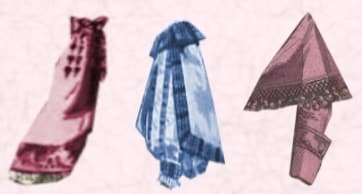

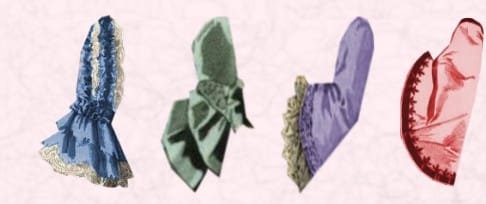

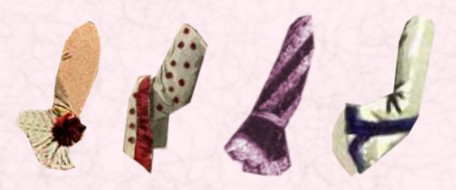
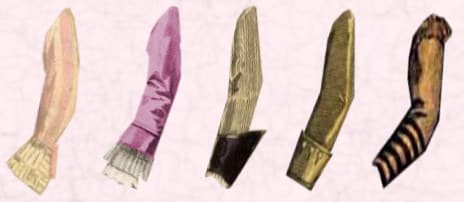

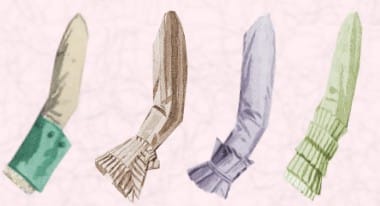
Read more detail about the era 1890-1914 in the section La Belle Époque 1890-1914 Fashion and The Mood of Edwardian Society.
